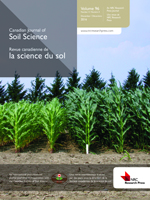Kreyling, J., Haei, M. and Laudon, H. 2013. Snow removal reduces annual cellulose decomposition in a riparian boreal forest. Can. J. Soil Sci. 93: 427-433. Decomposition is a key process in carbon and nutrient cycling. However, little is known about its response to altered winter soil temperature regimes in boreal forests. Here, the impact of soil frost on cellulose decomposition over 1 yr and soil biotic activity (bait-lamina sticks) over winter, in spring, and in summer was investigated using a long-term (9-yr) snow-cover manipulation experiment in a boreal Picea abies forest. The experiment consisted of the treatments: snow removal, increased insulation, and ambient control. The snow removal treatment caused longer and deeper soil frost (minimum temperature -8.6°C versus -1.4°C) at 10 cm soil depth in comparison with control, while the increased insulation treatment resulted in nearly no soil frost during winter. Annual cellulose decomposition rates were reduced by 46% in the snow removal manipulation in comparison with control conditions. Increased insulation had no significant effect on decomposition. The decomposition was mainly driven by microorganisms, as no significant difference was observed for containers enclosed with a 44-µm and a 1-mm mesh. Soil biotic activity was slightly increased by both the snow removal and the increased insulation treatment in comparison with control conditions over winter. However, this effect disappeared over spring and summer. We conclude that soil frost can have strong effects on decomposition in boreal ecosystems. Further studies should investigate to which degree the observed reduction in decomposition due to reduced snow cover in winter slows or even offsets the expected increase in decomposition rates with global warming.
How to translate text using browser tools
1 September 2013
Snow removal reduces annual cellulose decomposition in a riparian boreal forest
Juergen Kreyling,
Mahsa Haei,
Hjalmar Laudon
ACCESS THE FULL ARTICLE
It is not available for individual sale.
This article is only available to subscribers.
It is not available for individual sale.
It is not available for individual sale.
activité biotique du sol
changement climatique
freeze-thaw
gel
gel-dégel
litter bag
minicontainer





